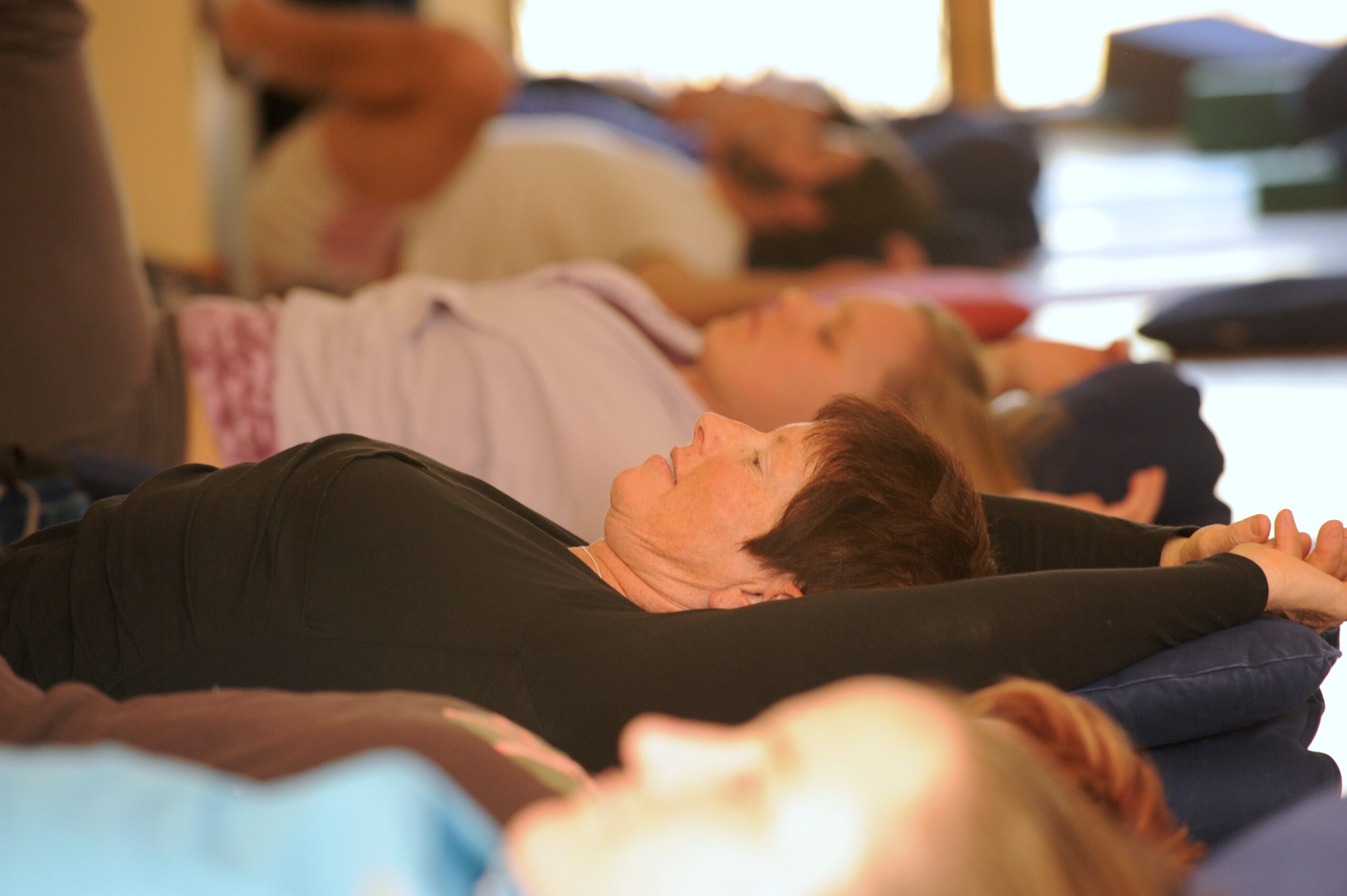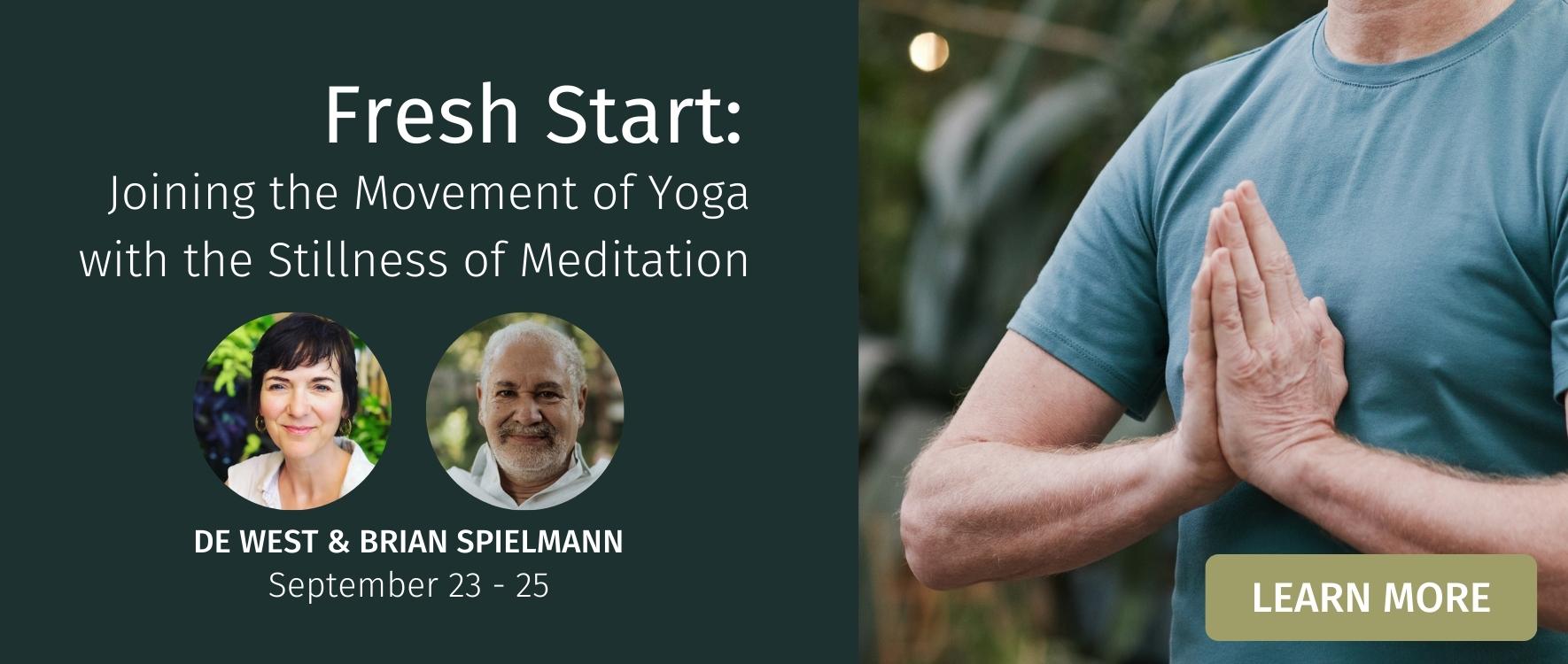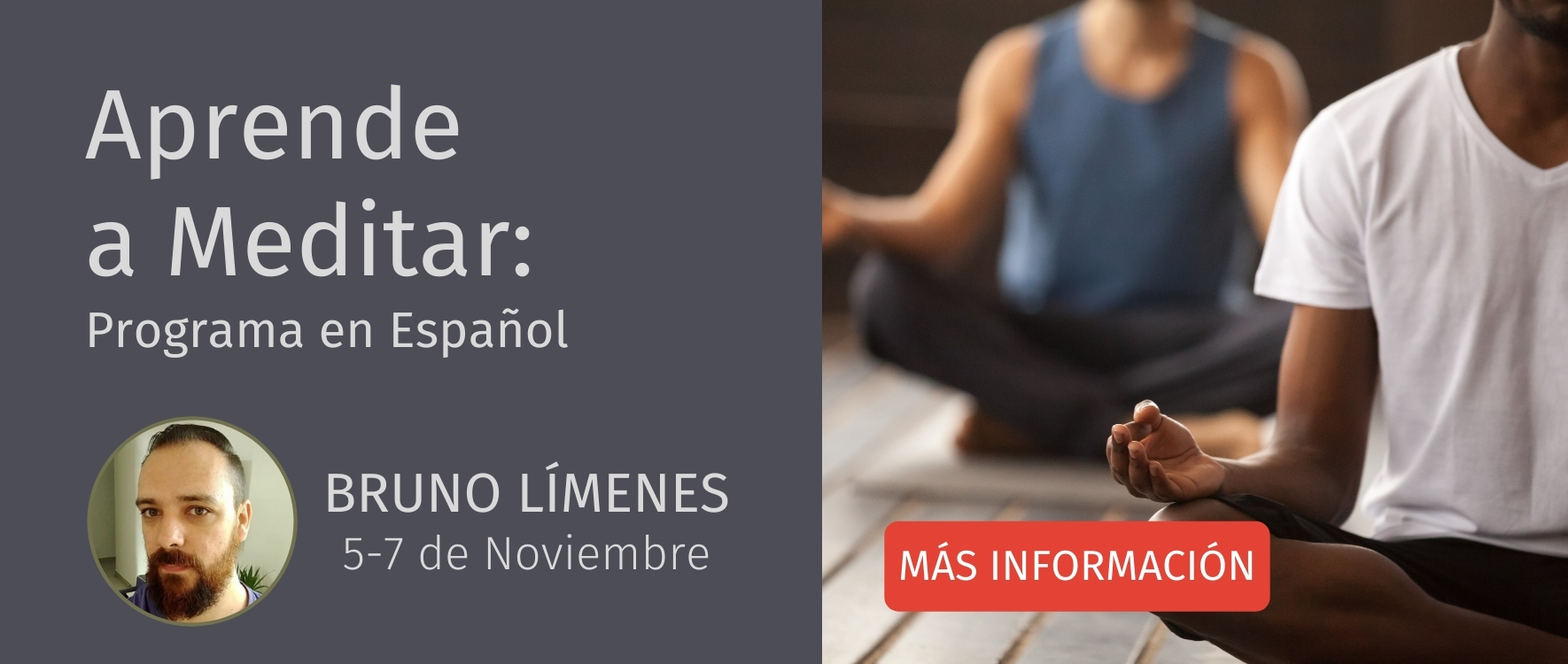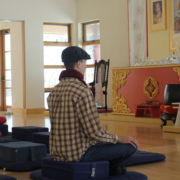The Practice of Dropping: An Antidote for a Busy Life
By Brian Spielmann & De West //
When we’re babies, the ability to grasp, which becomes fully developed around 9-12 months, is one of the most important developmental milestones. This core skill demonstrates planning, hand-eye coordination, muscular strength, and motor skills.
As adult spiritual practitioners, we have the opposite issue: how do we stop grasping and let go? Our minds are constantly grasping and fixating, creating much suffering in our minds and tension in our bodies. As Mick Jagger says, “You can’t always get what you want.” And that grasping is where samsara begins.
The Buddhist and Yogic traditions both offer clear, practical instructions on how to let go fully. When we integrate these traditions, working both with our body and our mental awareness, we have a powerful dual pathway to further relaxation and sense of peace.
Take a Load Off
The good news is that our thoughts and emotional baggage don’t actually exist. They come and they go, and we can let them arise with no judgment or need to push them away. We are not holding onto our baggage, we’re acknowledging it and letting it go through the dropping practice.
I love the idea of a fresh start. The practice of “dropping” makes this idea a reality. A fresh start becomes muscle memory, becomes new nervous system reflex. It speaks to the possibility of having a different outcome, even if the outer circumstances stay the same. It names a longing for things to naturally unfold. In the yoga tradition, we can use gravity (I usually have my students lying on the floor) to support the let-go and let-be. The dropping practice is like taking off a heavy backpack after a long hike in the Rocky Mountains. We can finally let go of that 25-pound weight we were holding. The invitation is to pause—even for a moment—our smart, quick, active mind; and let our body relax thoroughly.
We simply let go of our agenda. Ahh…
Whatever is going on, just let it arise—relaxing with your raw feelings, thoughts, and sensations. We are not suppressing any thoughts or sensations, but are emptying so that we can bring freshness to our minds and bodies. Nothing is blocked.
We can’t even imagine what it would be like for new conversations to take place that we have secretly longing for. In yoga, each moment or pose is an invitation for a fresh start. In meditation, each breath, especially each out breath, is an opportunity to start anew. These practices invite us to discover our true being.
Suzuki Roshi, the author of Zen Mind, Beginner’s Mind, told his students “If your mind is empty it is always ready for anything: it is open to everything. In the beginner’s mind there are many possibilities, in the expert’s there are few.”
Drop even the idea of emptiness
Many people approach meditation practice seeking an experience of no thoughts—a blank empty mind. They get upset when they can’t stabilize this so-called “peaceful, empty, thoughtless mind.” And worse, they get a glimpse of this state, and then chase it for the next decade.
This is not understanding meditation practice or the nature of thoughts and our mind properly. Imagining that thoughts are real is a misinformed view. And the notion that there is something to get rid of is at least on a subtle level is an act of self-aggression.
By nature, thoughts are empty, so there is nothing, nothing to fight or get rid of here.
Further, we are not seeking a blank mind. An enlightened mind has clarity and freshness.
The practice of dropping is more than just a good idea or an aspirational technique. It’s embodied reality, a pivot initiated from within. It’s not only beginner’s mind—it’s beginner’s body. To get a true glimpse of what it feels like, it is very helpful to have someone guide you through the practice so that you can stay focused on sensation. Most of the time we don’t even know where we hold or resist. Anything we can drop is a new move, a new incremental start.
Here is an exercise you can try at home to tune into where you may be holding the most tension.
Lie on the floor. Notice the contact of your skeleton with the floor. See if you can sense and feel the density of your body. Can you understand your lack of symmetry and how and where you are holding tension in your structure? Where are you making more contact with the floor with your body and where are you lifted from the floor? Notice how your breath lifts your spine away from the floor on the inhale, and notice that when you exhale there is a dropping quality. When the surrender to gravity comes, and resistance ceases, the body can flow effortlessly back into balance. We have an acceptance of gravity.
About the Authors


Featured image by Barbara Colombo










